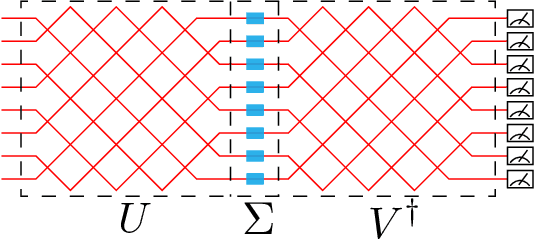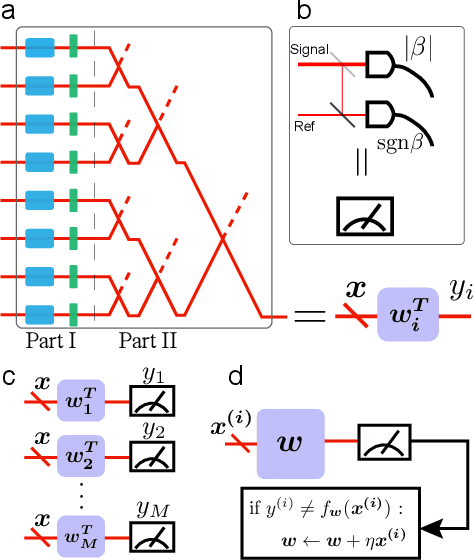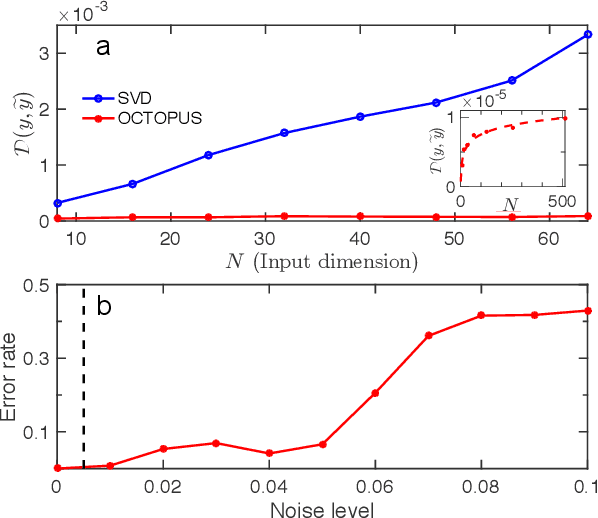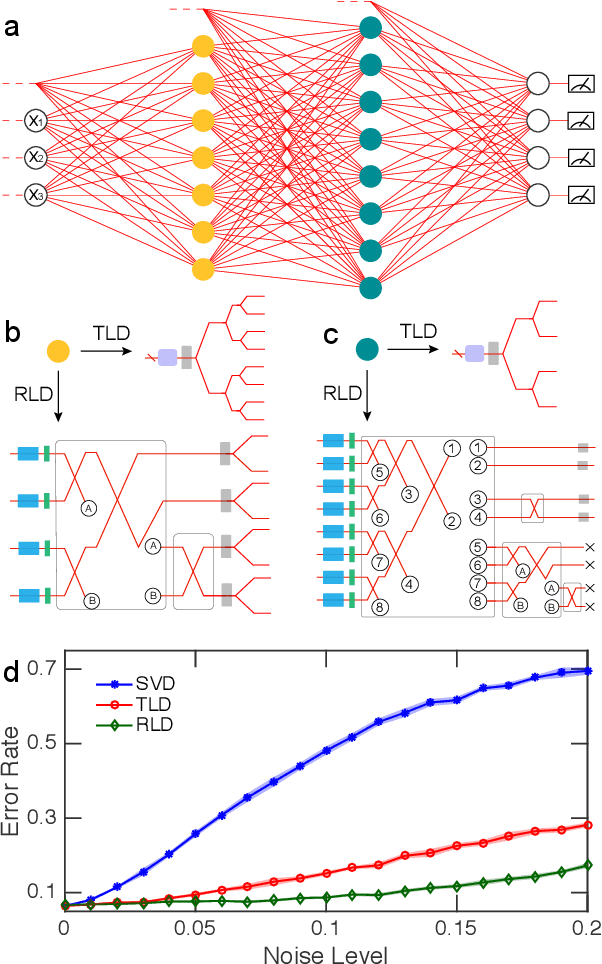Man-Hong Yung
Variational Quantum Circuits Enhanced Generative Adversarial Network
Feb 02, 2024Abstract:Generative adversarial network (GAN) is one of the widely-adopted machine-learning frameworks for a wide range of applications such as generating high-quality images, video, and audio contents. However, training a GAN could become computationally expensive for large neural networks. In this work, we propose a hybrid quantum-classical architecture for improving GAN (denoted as QC-GAN). The performance was examed numerically by benchmarking with a classical GAN using MindSpore Quantum on the task of hand-written image generation. The generator of the QC-GAN consists of a quantum variational circuit together with a one-layer neural network, and the discriminator consists of a traditional neural network. Leveraging the entangling and expressive power of quantum circuits, our hybrid architecture achieved better performance (Frechet Inception Distance) than the classical GAN, with much fewer training parameters and number of iterations for convergence. We have also demonstrated the superiority of QC-GAN over an alternative quantum GAN, namely pathGAN, which could hardly generate 16$\times$16 or larger images. This work demonstrates the value of combining ideas from quantum computing with machine learning for both areas of Quantum-for-AI and AI-for-Quantum.
Quantum-Inspired Machine Learning for Molecular Docking
Jan 22, 2024Abstract:Molecular docking is an important tool for structure-based drug design, accelerating the efficiency of drug development. Complex and dynamic binding processes between proteins and small molecules require searching and sampling over a wide spatial range. Traditional docking by searching for possible binding sites and conformations is computationally complex and results poorly under blind docking. Quantum-inspired algorithms combining quantum properties and annealing show great advantages in solving combinatorial optimization problems. Inspired by this, we achieve an improved in blind docking by using quantum-inspired combined with gradients learned by deep learning in the encoded molecular space. Numerical simulation shows that our method outperforms traditional docking algorithms and deep learning-based algorithms over 10\%. Compared to the current state-of-the-art deep learning-based docking algorithm DiffDock, the success rate of Top-1 (RMSD<2) achieves an improvement from 33\% to 35\% in our same setup. In particular, a 6\% improvement is realized in the high-precision region(RMSD<1) on molecules data unseen in DiffDock, which demonstrates the well-generalized of our method.
Low-Depth Optical Neural Networks
May 18, 2019



Abstract:Optical neural network (ONN) is emerging as an attractive proposal for machine-learning applications, enabling high-speed computation with low-energy consumption. However, there are several challenges in applying ONN for industrial applications, including the realization of activation functions and maintaining stability. In particular, the stability of ONNs decrease with the circuit depth, limiting the scalability of the ONNs for practical uses. Here we demonstrate how to compress the circuit depth of ONN to scale only logarithmically, leading to an exponential gain in terms of noise robustness. Our low-depth (LD) ONN is based on an architecture, called Optical CompuTing Of dot-Product UnitS (OCTOPUS), which can also be applied individually as a linear perceptron for solving classification problems. Using the standard data set of Letter Recognition, we present numerical evidence showing that LD-ONN can exhibit a significant gain in noise robustness, compared with a previous ONN proposal based on singular-value decomposition [Nature Photonics 11, 441 (2017)].
Transforming Bell's Inequalities into State Classifiers with Machine Learning
May 02, 2017



Abstract:Quantum information science has profoundly changed the ways we understand, store, and process information. A major challenge in this field is to look for an efficient means for classifying quantum state. For instance, one may want to determine if a given quantum state is entangled or not. However, the process of a complete characterization of quantum states, known as quantum state tomography, is a resource-consuming operation in general. An attractive proposal would be the use of Bell's inequalities as an entanglement witness, where only partial information of the quantum state is needed. The problem is that entanglement is necessary but not sufficient for violating Bell's inequalities, making it an unreliable state classifier. Here we aim at solving this problem by the methods of machine learning. More precisely, given a family of quantum states, we randomly picked a subset of it to construct a quantum-state classifier, accepting only partial information of each quantum state. Our results indicated that these transformed Bell-type inequalities can perform significantly better than the original Bell's inequalities in classifying entangled states. We further extended our analysis to three-qubit and four-qubit systems, performing classification of quantum states into multiple species. These results demonstrate how the tools in machine learning can be applied to solving problems in quantum information science.
 Add to Chrome
Add to Chrome Add to Firefox
Add to Firefox Add to Edge
Add to Edge